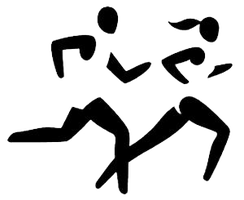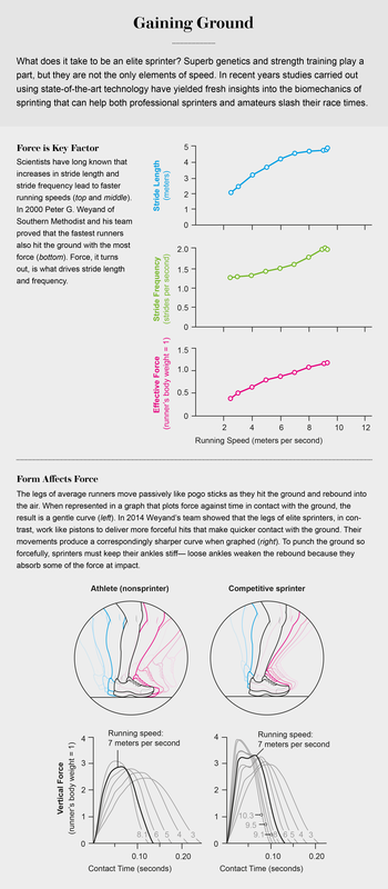
Running speed is affected by stride length (distance between right and left foot contacting the ground), force and frequency as well as total body fitness.
Jogging is more loosely defined, the speed is less than 6 mph / 9 km per hr / 2.5 meters per second or 9 mph / 14 km per h / 4 m per sec for athletes.
At speeds up to 2m/s (7 mph), walking requires less energy than running. As speed increases, different strides of running become more economical.

Unlike average runners that hit the ground with force about two times their body weight, legs of elite sprinters deliver more forceful hits (168 pound Mike Rodgers delivers 700 pound force per hit).
Elite sprinters make quicker contact with the ground (it could be just over two-hundredths of a second after initial contact with the ground), keeping their knees high and their ankles stiff, as loose ankles weaken the rebound.
Optimal cadence for average runners is between 160-170 steps per minute, while elite runners strike the ground around 180-200 steps per minute or even higher.
Optimal strides are from 1.1 to 1.3 of height, longer on synthetic tracks than cinder/dirt tracks.
References
Are running speeds maximized with simple-spring stance mechanics?
Faster top running speeds are achieved with greater ground forces not more rapid leg movements
